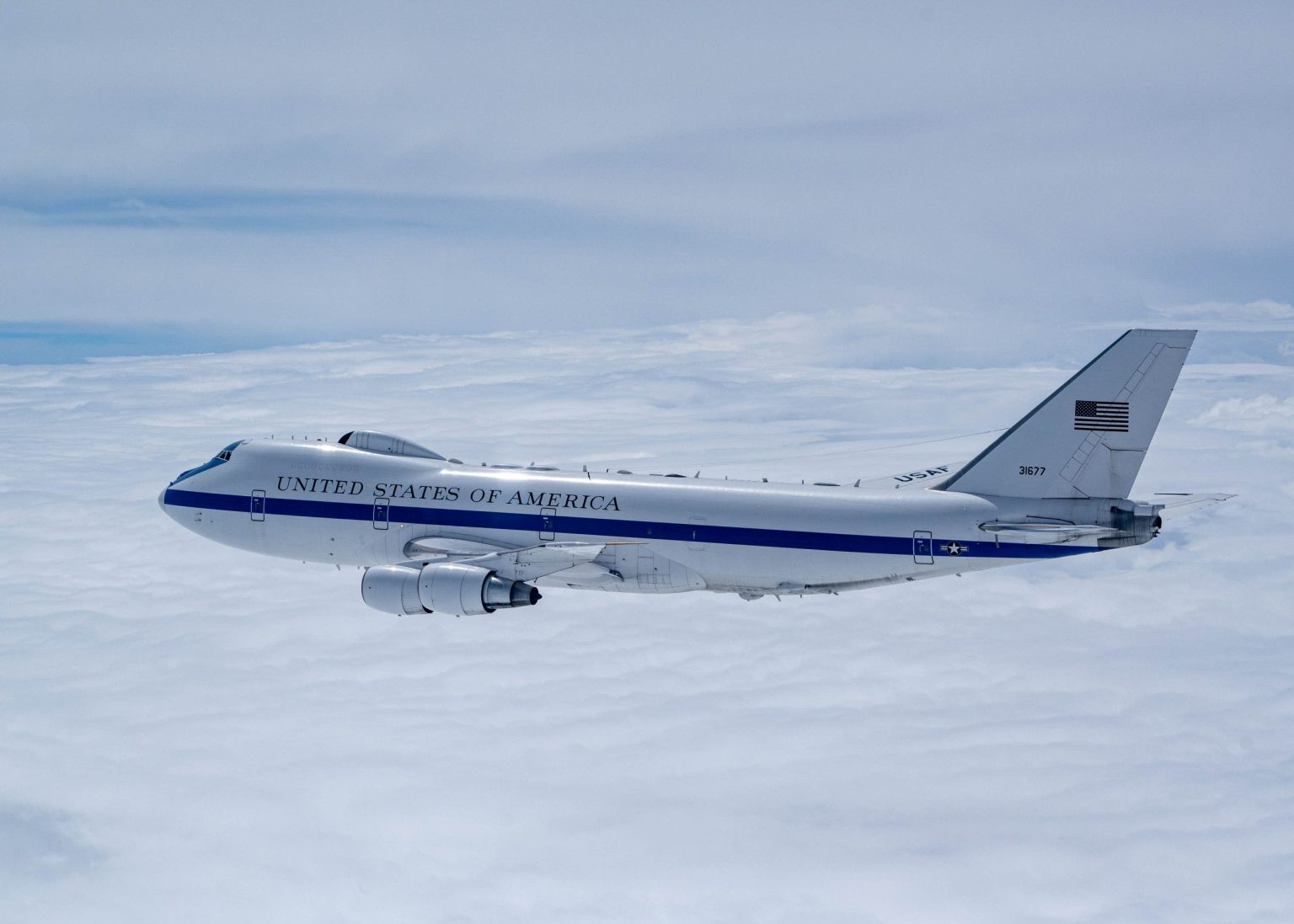In light of rising tensions between the United States and Iran, particularly over nuclear capabilities, the role of the U.S. Air Force E-4B Nightwatch—often referred to as the “doomsday plane”—has come back into public focus. This highly specialized aircraft recently landed at Joint Base Andrews, stirring discussions about its function and operational significance. As President Donald Trump deliberates military options regarding Iran, understanding the E-4B’s capabilities and purpose becomes increasingly pertinent.
| Article Subheadings |
|---|
| 1) What is the E-4B? |
| 2) Whom does the E-4B protect? |
| 3) Why use the E-4B? |
| 4) What is the current threat? |
| 5) Military operations and support |
What is the E-4B?
The E-4B Nightwatch is a militarized version of the Boeing 747-200, primarily operated by the U.S. Air Force. It was designed during the Cold War to serve as a mobile command post, enabling leadership to function during times of nuclear crisis or military conflict. This robust aircraft can remain airborne for extended periods, capable of flying for about a week when fully fueled, and can also refuel in midair.
Equipped with sixty-seven antennas and satellite dishes, the E-4B boasts substantial communication capabilities, allowing for global connectivity even from the sky. The U.S. Air Force currently maintains a fleet of four E-4B aircraft, each costing approximately $438.76 million.
Whom does the E-4B protect?
The E-4B is a vital asset for protecting high-ranking government officials during national emergencies. These officials include the President, the Secretary of Defense, and members of the Joint Chiefs of Staff. The aircraft allows for national security decisions to be made securely and efficiently, even in the event of a catastrophic incident.
According to official U.S. Air Force sources, the E-4B is constantly on alert, ensuring that at least one of the planes is ready to support senior defense officials 24/7. Its onboard facilities, which include sleeping quarters, bathrooms, and communication spaces, enable these officials to operate effectively while airborne.
Why use the E-4B?
The operational scope of the E-4B is extensive, encompassing various phases of potential threats. Designed to withstand electromagnetic pulses and even nuclear attacks, the E-4B is equipped to operate in environments where traditional aircraft might fail. This resilience is critical during periods of escalating tension between nations.
The military asserts that the E-4B can secure vital command and control connectivity, not just during a nuclear threat but also in the event of natural disasters. In 1994, FEMA authorized the plane for use as a command center during emergency situations, thus extending its utility beyond military applications.
What is the current threat?
Recent geopolitical developments have prompted Iranian leaders to warn of retaliation if the U.S. intervenes in the ongoing conflicts involving Israel. The potential for cyber warfare has become a pressing concern, with experts suggesting that Iran may resort to high-impact cyberattacks as its military situation becomes increasingly dire.
Reports indicate that planning is underway for potential airstrikes targeting Iran’s fortified nuclear facilities, specifically utilizing B-2 Spirit bombers equipped with massive ordinance to penetrate underground bunkers. The urgency behind these discussions illustrates the escalating stakes surrounding Iran’s nuclear ambitions and its relationships with adversaries.
Military operations and support
The E-4B is not just a technological marvel; it is a critical element of U.S. military operations. Its ability to remain operational in various high-stress scenarios ensures that key military leaders are equipped to handle crisis situations effectively. Further, it supports travel for defense officials, offering a mobile platform that enhances command capabilities worldwide.
With a crew capacity of 112 personnel, the E-4B features dedicated areas for briefings and strategic discussions, making it an ideal setting for high-stakes decision-making during military operations. As tensions rise, the role of such aircraft defines the preparedness and responsive capabilities of U.S. military leadership.
| No. | Key Points |
|---|---|
| 1 | The E-4B Nightwatch operates as a mobile command post for U.S. leaders during crises. |
| 2 | The aircraft can remain airborne for up to a week, ensuring continuous operational capabilities. |
| 3 | It is always on standby, ensuring readiness 24/7 in support of national security officials. |
| 4 | The E-4B is designed to withstand various attacks, including nuclear and cyber threats. |
| 5 | Current geopolitical tensions highlight the aircraft’s importance in U.S. military strategy. |
Summary
The potential military intervention in Iran amidst ongoing conflicts accentuates the importance of the E-4B Nightwatch. As a crucial asset for ensuring consistent communication and governance during crisis situations, the E-4B underscores the U.S. commitment to securing national interests. As discussions continue regarding military options, understanding such military infrastructures will be key to navigating complex geopolitical landscapes.
Frequently Asked Questions
Question: What is the primary function of the E-4B?
The primary function of the E-4B is to serve as a mobile command post for U.S. government officials and military leaders during emergencies, particularly nuclear crises.
Question: How many E-4B aircraft are in service?
The U.S. Air Force maintains a fleet of four E-4B Nightwatch aircraft, each equipped with advanced communication and operational capabilities.
Question: Why is the E-4B referred to as the “doomsday plane”?
The E-4B is often called the “doomsday plane” due to its role in facilitating government continuity during catastrophic events, including nuclear warfare, ensuring that command and control can be maintained.


